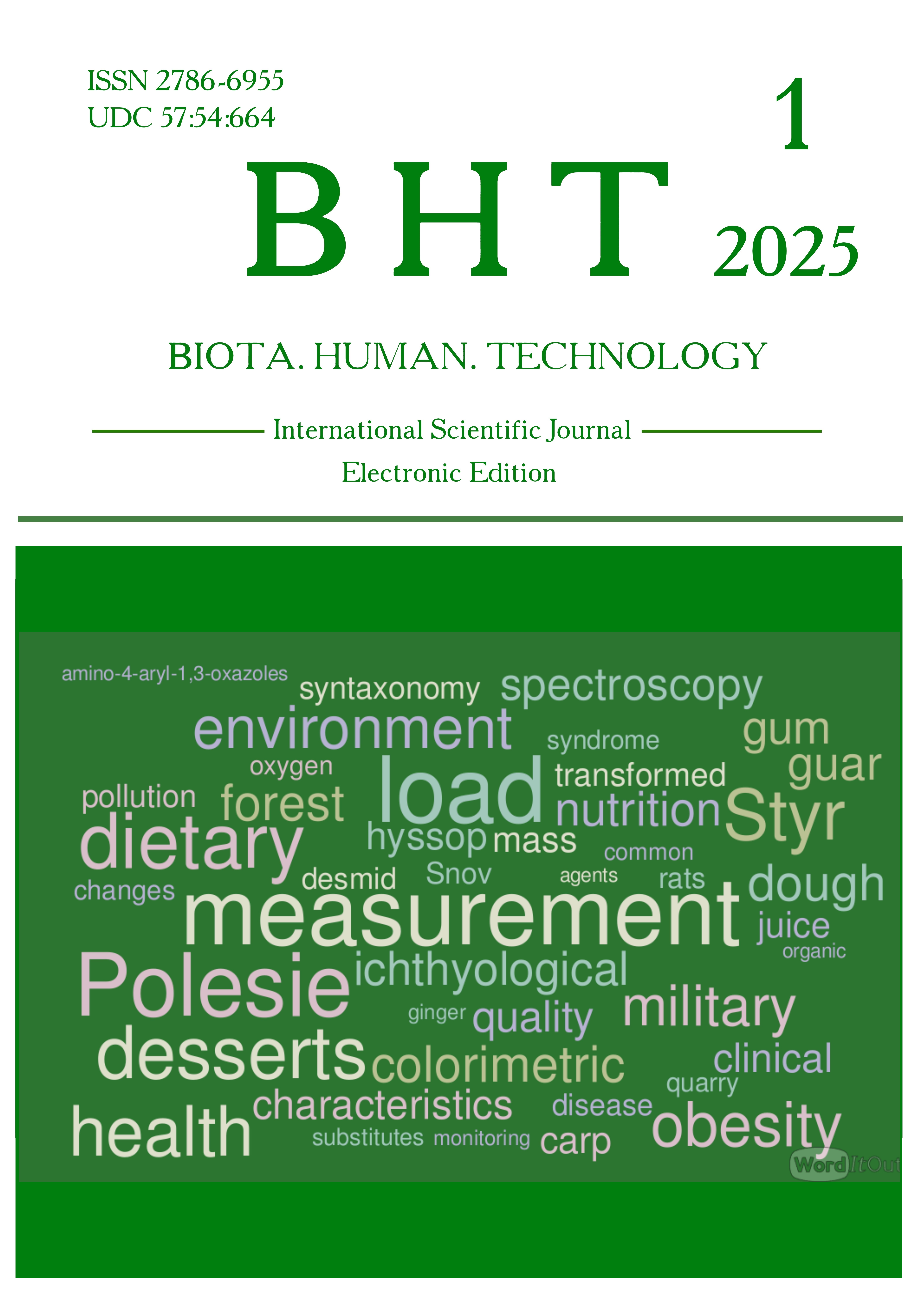ANALYSIS OF MODERN CORROSION RATE MEASUREMENT METHODS
DOI:
https://doi.org/10.58407/bht.1.25.13Keywords:
corrosion, electrochemistry, corrosion rate determination, mass measurement (gravimetry), polarization resistance, cyclic voltammetry, impedance spectroscopy, chronopotentiometry, corrosion monitoringAbstract
In the modern world, with the rapid development of infrastructure, corrosion protection has become particularly important. The contemporary world relies on complex engineering structures such as bridges, buildings, vehicles, pipelines, and power plants, which are predominantly made of metals. These structures are exposed to aggressive environmental factors that may lead to their destruction, significant economic losses, and potential environmental damage. Determining the corrosion rate is a key task in implementing effective protection strategies and extending the service life of metallic structures.
Purpose: To investigate modern methods for determining the corrosion rate of metallic materials and to analyze scientific publications dedicated to the practical application of these methods in monitoring and controlling the condition of structures. In particular, attention is focused on approaches that enable the prompt acquisition of accurate data on the intensity of corrosion processes, which is essential for improving the reliability and safety of infrastructure facilities.
Methodology: Field and accelerated methods for determining corrosion rates were examined. Field methods included gravimetric techniques, while accelerated methods comprised gravimetry under accelerated conditions and electrochemical approaches. Particular attention was paid to the polarization resistance method, which allows for the rapid assessment of the corrosive activity of the environment. In addition, cyclic voltammetry, impedance spectroscopy, and chronopotentiometry were examined as complementary polarization methods. The use of these methods promotes the development of more effective strategies to protect metals from corrosive effects.
Scientific Novelty: Modern methods of determining the corrosion rate were systematized, taking into account their accuracy, speed of data acquisition, and suitability for real operating conditions. The advantages of the polarization resistance method were highlighted as a key means for rapid and reliable monitoring of corrosion processes. Literature analysis made it possible to summarize the experience of applying different approaches in industry and research, to identify their advantages and disadvantages, and to formulate recommendations for further improvement of the techniques.
Conclusions: Field methods, such as gravimetry, closely reflect real corrosion conditions but require prolonged exposure times, which may be impractical for rapid investigations. Accelerated methods allow for quick results, but may sometimes partially deviate from the actual picture of corrosion processes. Electrochemistry, particularly the polarization resistance method and other polarization approaches, provides an accurate and in-depth understanding of corrosion mechanisms, allowing the detection and analysis of changes related to both the material and the environment. Further combination of field and accelerated methods, as well as the development of electrochemical techniques, will enhance the effectiveness of structural condition control and improve protection strategies under real operating conditions.
Downloads
Downloads
Published
How to Cite
Issue
Section
License
Copyright (c) 2025 Олексій Гуменюк, Інна Трус

This work is licensed under a Creative Commons Attribution 4.0 International License.


